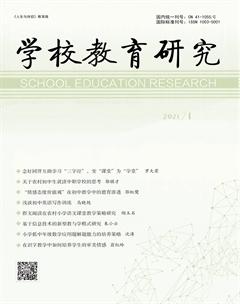Methods of English Film Title Translation
王艳容



In fact, English and Chinese are identical. Maybe there will be no correspondence between two languages. Hence there can be no fully exact translation methods. So methods of English film title translation are very important.
1.Transliteration
Transliteration is the commonly used and most directly translating methods.
In many western films, they always regard the main characters name or the palaces as film titles. Some film titles are revised according to famous literary works. For example:
Summary: These western famous people are known well by Chinese people, so when translated into Chinese, they can be accepted quickly. So when the target languages are familiar with audience, especially for names, palaces and historical events which are full of national culture features, we always use transliteration.
2. Literal Translation
The literal translation means with the permission of versions condition, we can keep both the original content and form. Especially we should maintain figure of speech, form and Local characteristics of the original text. Firstly, film titles should comply with the actual meaning of films; secondly, try to pander audiences taste and expectation as much as possible; in addition, film titles should be in line with fashion trend; last, film titles should pander the aesthetic sentiment of mainstream crowd. For example:
Summary: To sum up, literal translation can not only contain the original meaning, but also maintain its exotic favor. These titles always use common words to show the characteristics of the actors or actress, so when we see an attractive film title which can reflect the content or theme of a film, that means translators used literal translation.
3. Free Translation
Since there are many differences between the East and West: languages, culture, social background and customs are almost different. Sometimes, direct translation can not express the content and theme of the film, and then we are required to use free translation. Free translation means that we take both the meaning and the spirit of the original title into consideration, ignoring the form. Free translation is frequently needed when literal translation is not suitable. For example:
When we use free translation, we have two major and common techniques, namely, addition and omission. For one thing, when the original language is too simple to let audience know the real content, or maybe misled or puzzled the audiences, we always add more information to the title as addition. For example:
For another, due to the differences between English and Chinese we need omission when we do translation. Generally speaking, we usually omit some words, such as “a”, “the”, “in” and “my” etc. for example:
Summary: Free translation is always needed when literal translation is not so good for translators. Free translation allows translators to change the form and reflect the content so that they can avoid misleading and misunderstanding. There are many techniques in free translation: addition and omission are commonly used.
4. Adaptation
Adaptation is regarded as the freest form of translation. When neither literal nor free translation works in some cases, translators choose adaptation. Adaptation is to get rid off the original title and change it into a new one according to the content of the film. Hence translators are asked to understand the content and theme of the original film thoroughly, furthermore, they should have the confidence of reproducing a new title correctly and creatively. These are some topical examples:
Summary: Sometimes, it is hard to tell exactly what specific method is used. We call this method as adaptation. Actually, no single method can solve all difficult problems. We should try to adapt ourselves to the changing circumstances.
At last,I hope good English film title translation can help one enjoy movie, enjoy English film and enjoy life better.

